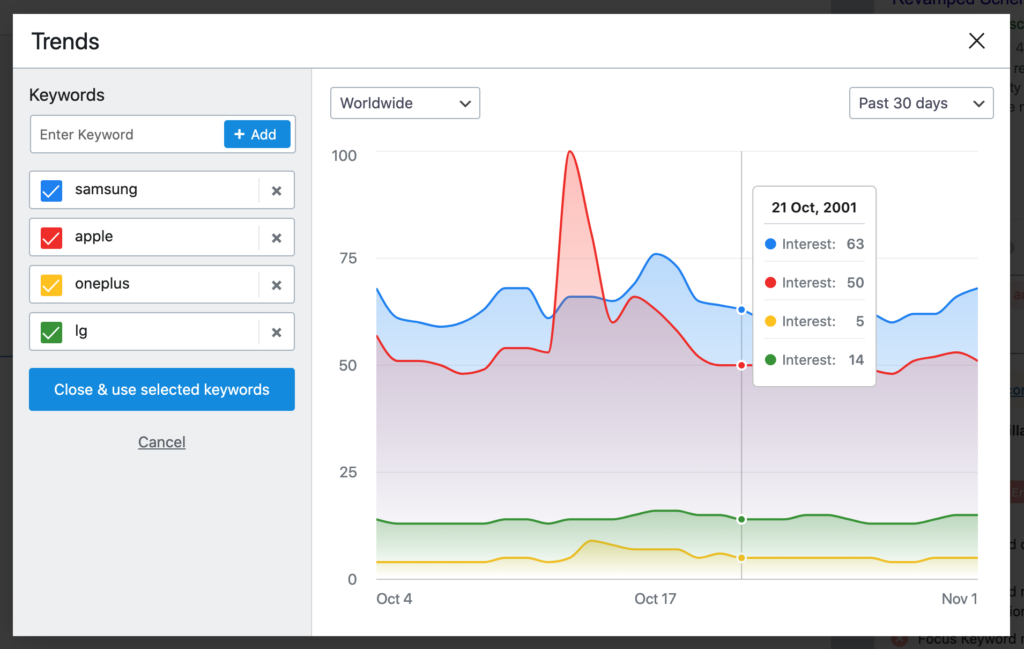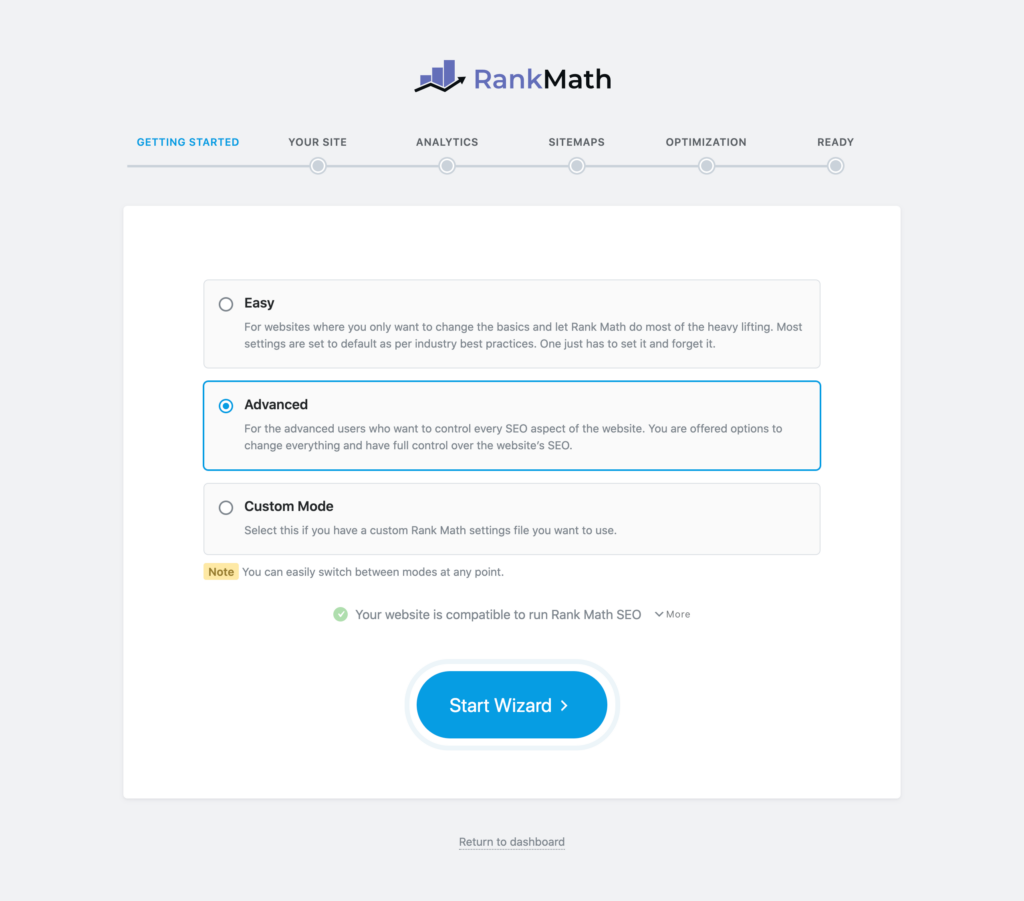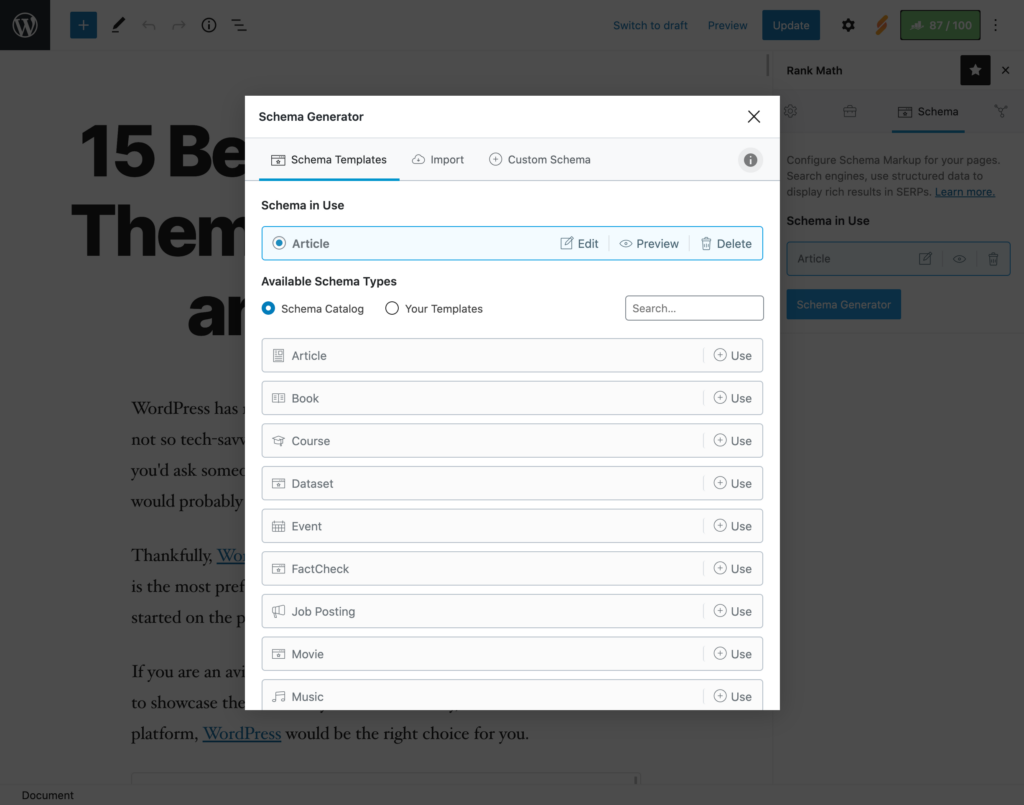Rank Math Free vs Pro: Complete Guide to Features and Use Cases
In the ever-evolving SEO ecosystem, Rank Math has established itself as an essential tool for WordPress sites. This comprehensive guide will delve into the depths of Rank Math, exploring its advanced features, optimization techniques, and how to use it to propel your site to the top of the SERPs (Search Engine Results Pages). Whether you’re a beginner blogger or a seasoned SEO professional, this guide will provide you with the knowledge needed to make the most of Rank Math, both in its free and Pro versions.

Part 1: The Fundamentals of Rank Math
1.1 What is Rank Math?
Rank Math is much more than just an SEO plugin. It’s a complete suite of optimization tools designed for WordPress. Its goal is to simplify the SEO process while offering advanced features that rival high-end paid solutions.
1.2 Installation and Initial Setup
Installing Rank Math is simple, but the initial setup is crucial to fully exploit its potential.
Key steps:
- Install Rank Math from the WordPress plugin directory.
- Launch the setup wizard.
- Connect your site to Google Search Console.
- Configure the basic schemas for your site.
- Import existing SEO data if you’re migrating from another plugin.
Pro Tip: During setup, activate the “Advanced Mode” option to access additional features from the start.

Part 2: On-Page Optimization with Rank Math
2.1 Real-Time Analysis
One of Rank Math’s key features is its real-time SEO analysis. Here’s how to make the most of it:
- Use the SEO score indicator as a guide, not as an absolute rule.
- Focus on natural optimization rather than achieving a perfect score.
- Use Rank Math’s suggestions to improve your content structure.
Practical example: For an article on “best organic gardening techniques”, Rank Math might suggest:
- Including the keyword in the H1 title
- Adding H2 and H3 subheadings to structure the content
- Optimizing keyword density (aim for 1-2%)
2.2 Multi-Keyword Optimization
Rank Math Free allows optimization for 5 keywords, while Pro offers an unlimited number.
Advanced technique:
- Use a combination of primary and secondary keywords.
- Incorporate long-tail variations to capture more diverse traffic.
- Use the built-in keyword research tool to find relevant suggestions.
Example:
- Primary keyword: “organic gardening”
- Secondary keywords: “composting techniques”, “natural pest control”, “organic crop rotation”, “natural fertilizers”
2.3 Rich Snippets and Schema Markup
Rank Math excels in implementing structured schemas.
Steps to maximize impact:
- Choose the appropriate schema type (Article, Product, Recipe, etc.).
- Fill in all fields proposed by Rank Math.
- Use Google’s structured data testing tool to verify implementation.
- Monitor performance in Google Search Console.
Pro Tip: For e-commerce sites, use the Product schema with customer reviews to improve your CTR in SERPs.

Part 3: Advanced Techniques with Rank Math Pro
3.1 Advanced Keyword Tracking
Rank Math Pro offers detailed position tracking for your target keywords.
How to use it effectively:
- Set up keyword groups by theme or page.
- Set alerts for significant position changes.
- Analyze long-term trends to identify optimization opportunities.
Tracking strategy:
- Brand keywords
- Main product/service keywords
- Long-tail keywords with high conversion potential
- Competitor keywords
3.2 Full Site SEO Analysis
This Pro feature allows for a global analysis of your site.
Key points to monitor:
- Crawl and indexing issues
- Internal linking opportunities
- Pages with low SEO score
- Duplicate content issues
Action plan:
- Perform a comprehensive monthly analysis.
- Prioritize critical issues (e.g., non-indexed pages).
- Create an action plan to resolve identified issues.
- Monitor the evolution of key metrics over time.
3.3 WooCommerce SEO Integration
For e-commerce sites using WooCommerce, Rank Math Pro offers specific features.
Essential optimizations:
- Set up detailed product schemas.
- Optimize titles and descriptions for product categories.
- Use SEO-optimized breadcrumbs.
- Implement structured product reviews.
Example of an optimized product schema:
{
"@context": "https://schema.org/",
"@type": "Product",
"name": "Product Name",
"image": "Image URL",
"description": "Product description",
"brand": {
"@type": "Brand",
"name": "Brand name"
},
"offers": {
"@type": "Offer",
"priceCurrency": "USD",
"price": "29.99",
"itemCondition": "https://schema.org/NewCondition",
"availability": "https://schema.org/InStock",
"url": "Product URL"
},
"aggregateRating": {
"@type": "AggregateRating",
"ratingValue": "4.5",
"reviewCount": "24"
},
"review": [
{
"@type": "Review",
"author": "Author Name",
"datePublished": "2024-01-01",
"description": "Review text",
"name": "Review title",
"reviewRating": {
"@type": "Rating",
"bestRating": "5",
"ratingValue": "5",
"worstRating": "1"
}
}
]
}
Part 4: Additional Features and Differences between Rank Math Free and Pro
4.1 Additional Features of Rank Math Pro
Rank Math Pro offers advanced features that go well beyond those available in the free version. Here’s a detailed presentation of these features, as would be developed in an SEO-dedicated blog.
4.2 Comparison between Rank Math Free and Rank Math Pro
| Feature | Rank Math Free Download Rank Math Free | Rank Math Pro Download Rank Math PRO |
|---|---|---|
| Easy setup wizard | Yes | Yes |
| Real-time SEO analysis | Yes | Yes |
| Keyword management | Up to 5 | Unlimited |
| Keyword tracking | No | Yes |
| Rich Snippets and Schema Markup | Yes | Yes |
| Local SEO | Yes | Yes |
| Image SEO | Yes | Yes |
| Google Search Console integration | Yes | Yes |
| Rank tracking | No | Yes |
| Advanced SEO reports | No | Yes |
| Priority support | No | Yes |
| Advanced integrations | No | Yes |
| WooCommerce SEO | No | Yes |
| Multisite support | No | Yes |
| Instant indexing | No | Yes |
| Video SEO | No | Yes |
| Local SEO for multiple locations | No | Yes |
| Advanced image SEO | No | Yes |
| Advanced content analysis | No | Yes |
| Video and news sitemaps | No | Yes |
| Advanced redirection manager | No | Yes |
| Email ranking reports | No | Yes |
| Bulk optimization | No | Yes |
| Automated SEO analysis | No | Yes |
| Content AI | No | Yes |
Part 5: AI Integration with Rank Math
5.1 Introduction to Content AI
Content AI is a suite of artificial intelligence-assisted writing tools integrated into Rank Math, designed to improve content creation and optimization. This feature allows you to generate SEO-friendly content faster and more efficiently.
Key features of Content AI:
1. Blog post ideas Generating ideas for blog posts can often be challenging, especially when you’re short on inspiration. Content AI analyzes current trends and user behaviors to suggest relevant and appealing ideas for your blog articles.
- How it works: Using sophisticated algorithms, Content AI evaluates popular keywords and topics in your niche. It then proposes a list of blog ideas that are likely to attract traffic and engage your audience.
- Use case: A health blogger might receive suggestions on topics like “The benefits of daily meditation” or “Anti-inflammatory foods for better health”.
2. Topic research Topic research goes beyond simple idea generation. Content AI performs an in-depth analysis of topics to discover trends, history, and key players in the industry.
- How it works: The tool explores a vast database of content to identify topics that generate engagement. It provides contextual information, such as the topic’s history and major influences in your field.
- Use case: A marketing specialist could use this feature to understand how digital marketing has evolved over the years and identify key influencers to follow.
3. SEO title writing A good title is crucial for attracting attention and encouraging clicks. Content AI helps create SEO-optimized titles that improve visibility and organic traffic.
- How it works: Using keyword analysis and SEO best practices, Content AI generates catchy and optimized titles. It takes into account the ideal length, keyword usage, and potential engagement.
- Use case: A technology blog might get titles like “10 Technological Innovations That Will Revolutionize 2024” or “How AI is Transforming the Financial Sector”.
4. SEO description generation Meta descriptions are crucial for improving click-through rates on SERPs. Content AI writes concise and persuasive summaries to encourage users to click on your link.
- How it works: The tool analyzes your page content and target keywords to generate an optimized description that effectively summarizes the article while attracting users’ attention.
- Use case: For an article on sustainable development, Content AI might generate a description like “Discover how to reduce your carbon footprint with these 5 simple tips for a more sustainable lifestyle.”
5. Paragraph rewriting Sometimes it’s necessary to refine existing content to improve clarity and engagement. Content AI can rewrite paragraphs while preserving their original meaning.
- How it works: Using advanced natural language processing techniques, Content AI rewrites paragraphs to improve fluency and engagement without losing the main message.
- Use case: A blogger who wants to improve an old article on travel could use this feature to refresh the content and make it more appealing to current readers.
6. Meta tag optimization Optimizing meta tags is essential for SEO. Content AI can automatically generate SEO meta tags for hundreds of articles at once.
- How it works: The tool analyzes the content of each article and generates optimized meta tags, including titles and descriptions, based on target keywords and SEO best practices.
- Use case: A news site could use this feature to quickly optimize meta tags for all its articles, thus improving their visibility on search engines.
7. Integration with RankBot RankBot is an AI personal assistant that helps with research and gathering relevant information for your content.
- How it works: RankBot uses AI to search for information, data, and relevant trends for your articles, saving you time and providing valuable insights.
- Use case: A writer working on a technical article could use RankBot to collect recent data and statistics to include in their article.
5.2 Using Content AI for SEO Optimization
Keyword research and suggestions: Content AI analyzes target keywords and provides intelligent recommendations on their use in content, titles, and meta tags to maximize chances of ranking on the first page of SERPs.
Optimized content creation: With tools such as the product description generator, FAQ writing, and testimonial generation, Content AI facilitates the creation of rich and engaging content.
Content structure improvement: Content AI offers suggestions to improve content structure by optimizing the number of words, links, titles, and media, based on SEO best practices.
Automatic writing mode: The automatic writing mode allows you to put the writing process on autopilot, generating high-quality content by simply pressing a few buttons.
Conclusion
Rank Math is a powerful and flexible SEO solution for WordPress users, offering advanced features in both its free and Pro versions. The integration of artificial intelligence with Content AI further propels Rank Math’s capabilities, facilitating optimized content creation and significantly improving SEO performance.
With advanced keyword tracking, detailed SEO reports, seamless integration with WooCommerce, and AI tools for writing and content optimization, Rank Math Pro provides a complete suite of tools for any professional looking to maximize their website’s visibility and engagement.
